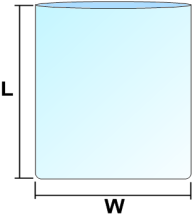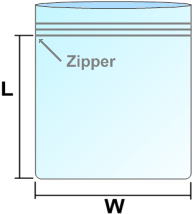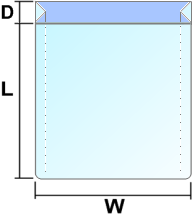Garments Manufacturing:
A complete garment has to face several processes from its order receiving to shipment. During garments manufacturing, a process flow chart must be needed to complete an order easily. Also a process flow chart helps to understand a garment manufacturing method that how the raw materials are converted into the wearable garments.

Garments Manufacturing Process
Flow Chart of Garments Manufacturing Process / Technology:
A basic garment manufacturing flow chart is presented in the below:
Design
↓
Pattern Making
↓
Fit Sample Making
↓
Production Pattern Making
↓
Grading
↓
Marker Making
↓
Fabric Spreading
↓
Fabric Cutting
↓
Cutting Parts Sorting or Bundling
↓
Sewing
↓
Garments Inspection
↓
Garments Ironing and Finishing
↓
Final Inspection
↓
Garments Packing
↓
Cartooning
↓
Shipment
↓
Pattern Making
↓
Fit Sample Making
↓
Production Pattern Making
↓
Grading
↓
Marker Making
↓
Fabric Spreading
↓
Fabric Cutting
↓
Cutting Parts Sorting or Bundling
↓
Sewing
↓
Garments Inspection
↓
Garments Ironing and Finishing
↓
Final Inspection
↓
Garments Packing
↓
Cartooning
↓
Shipment
Each process of garments manufacturing flow chart is discussed in the below with the details:
1. Design:
Design is provided by the buyer. After placing an order buyer send the technical sheet and art-work of an order to the merchandiser. This process is done by both manually or by using computer.
Design is provided by the buyer. After placing an order buyer send the technical sheet and art-work of an order to the merchandiser. This process is done by both manually or by using computer.
2. Pattern Making:
By following technical sheet and art-work, pattern of each garment style should be made. It’s done by both manually and by using computerized method.
By following technical sheet and art-work, pattern of each garment style should be made. It’s done by both manually and by using computerized method.
3. Fit Sample Making:
The main target of making a fit sample is to follow the details instruction about that garments style. After making it’s sent to the buyer to rectify. It’s done by manually.
The main target of making a fit sample is to follow the details instruction about that garments style. After making it’s sent to the buyer to rectify. It’s done by manually.
4. Production Pattern Making:
For bulk production, allowance added here with net dimension. Production Pattern Making is done by both manually and by using computer.
For bulk production, allowance added here with net dimension. Production Pattern Making is done by both manually and by using computer.
5. Grading:
During an order confirmation, the buyer suggests about the size ratio of that order. So that order should be graded according to the buyer’s instruction. Grading is done by manually or by using computer.
During an order confirmation, the buyer suggests about the size ratio of that order. So that order should be graded according to the buyer’s instruction. Grading is done by manually or by using computer.
6. Marker Making:
Marker is a very thin paper which contains all the parts of a particular garment. To make the cutting process easy, it’s must be needed. Marker making process can be done by both manually and by using computer.
Marker is a very thin paper which contains all the parts of a particular garment. To make the cutting process easy, it’s must be needed. Marker making process can be done by both manually and by using computer.
7. Fabric Spreading:
To cut the fabric properly fabric is spread in lay form. Fabric Spreading is done by manually or by using computerized method.
To cut the fabric properly fabric is spread in lay form. Fabric Spreading is done by manually or by using computerized method.
8. Fabric Cutting:
Fabrics have to cut here according to marker of garments. Fabric Cutting process is done by using manual method or computerized method.
Fabrics have to cut here according to marker of garments. Fabric Cutting process is done by using manual method or computerized method.
9. Cutting Parts Sorting or Bundling:
Here, cutting parts have to sort out or make bundling to send these easily into the next process. This process is done by manually.
Here, cutting parts have to sort out or make bundling to send these easily into the next process. This process is done by manually.
10. Sewing:
All the parts of a garment are joined here to make a complete garment. Sewing process is done by manually.
All the parts of a garment are joined here to make a complete garment. Sewing process is done by manually.
11. Garments Inspection:
After completing sewing, inspection should be done here to make fault free garments. Garments Inspection is done by using manual method.
After completing sewing, inspection should be done here to make fault free garments. Garments Inspection is done by using manual method.
12. Garments Ironing and Finishing:
Here garments are treated by steam; also required finishing should be completed here. This process is done by using manual method.
Here garments are treated by steam; also required finishing should be completed here. This process is done by using manual method.
13. Final Inspection:
Finally the complete garments are inspected here according to the buyer’s specification. Final Inspection is done by manual method.
Finally the complete garments are inspected here according to the buyer’s specification. Final Inspection is done by manual method.
14. Garments Packing:
Complete garments are packed here by using buyers instructed poly bag. Garments packing are done by using manual method.
Complete garments are packed here by using buyers instructed poly bag. Garments packing are done by using manual method.
15. Cartooning:
To minimize the damages of garments, all the garments have to cartooned by maintaining buyers instruction. This process is done by manually.
To minimize the damages of garments, all the garments have to cartooned by maintaining buyers instruction. This process is done by manually.
16. Shipment:
After completing all the required processes it’s finally send to the buyer.
After completing all the required processes it’s finally send to the buyer.
To scan this code, you can use as QR scanner app on your phone or some camera apps.











